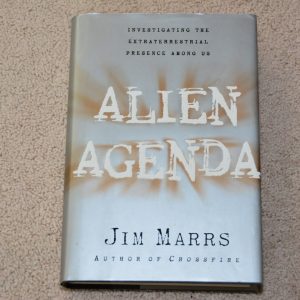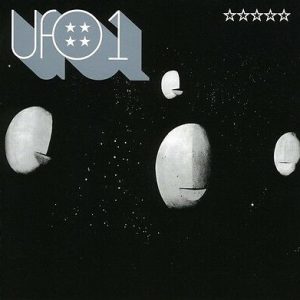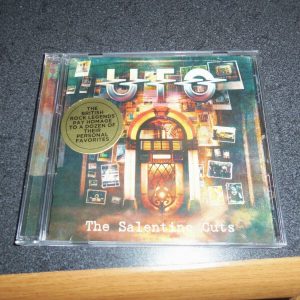A legendary science fiction series is ending. Star Gate SG-1 will begin the last season of its long run in April 2007 on the Sci-Fi Channel. This is very bad news for SG-1 Fans who have invested ten years and over 200 episodes in the long-running saga. But is there more here than meets the eye?
SG-1 has a loyal fan following. That is best explained by the fact that it blends old style science fiction with new. The scripts give you time to get to know the characters without slowing down the action. More importantly, the emphasis has always been on the storylines, not the personal lives of the cast members.
NBC owns the sci-fi channel and that conglomerate has a reputation for ruining popular shows and storylines with endless morality lessons that teach feel good values and anti-establishment messages. SG-1 remained strangely untouched in that area. In fact, the Air Force has been a supporter of the show for some time.
It wasn’t long ago that SG-1 Executive Producer Richard Dean Anderson (who plays Brig. Gen. Jack O’Neill on the series) was honored by U.S. Air Force Chief of Staff, General John P. Jumper. The series was given kudos for continuous positive depiction of the U.S. Air Force and Anderson was made an honorary brigadier general. Given the series storyline, this all seems a bit odd.
While it can easily be argued that SG-1 does present the U.S. Air Force in a positive and respectful way, can the same be said of Anderson‘s alter ego? Jack O’Neill is hardly the poster boy for the behavioral standards of a U.S. Military Officer. He often disrespects superior officers, seems to do his duty in a semi-conscious state, ignores or disobeys orders and disregards military protocol.
I’m sure that the Air Force understands the need for some comic relief supplied by Anderson’s O’Neill character. However, I find it hard to believe that Anderson would receive such an honor just for producing a good sci-fi show and making the Air Force look good. I believe something else might be happening here, whether on purpose or by proxy.
Everything I have read about SG-1 and its production tells me there is probably no conscious effort to allow the show to be used as some sort of U.S. Government Propaganda tool. However, the series is a natural for it. Consider these observations:
– SG-1 continuously presents the idea that the U.S. Government is keeping the existence of alien life and contact with them secret for all the right reasons. The message: Secrecy is for your own good.
– There are rogue elements within the Government that exploit the connection between Aliens and the Government. They do that to obtain secret technology and are willing to sell out their own kind to obtain it. The message: Good cop bad cop, but the end result is basically the same.
– Dr. Frank E. Stranges is Founder and President of the National Investigations Committee on UFOs. I have been honored to share a stage with him on several occasions for speaking engagements and join him for a press conference. His book, Stranger at the Pentagon, tells the story of his meeting during the 1950s with an extra-terrestrial named Commander Thor (that’s Supreme Command Thor for SG-1 Fans) at the Pentagon. Although Dr Stranges tells us that his Thor is more humanlike and not physically akin to the Ascard on SG-1, there are many similarities between the real Thor and the Ascard fictional civilization. The Message: Educate the public on what’s really going on through a fictional series and they are likely to accept the truth when the U.S. Government decides to tell all.
– The Ascard are portrayed as a group of small, gray aliens with large eyes that help the humans, but only after years of abducting them. The Abductions are to solve a DNA problem the Ascard are having and allow them to better understand humans. The payoff is that they protect us from bad aliens and help us to technologically advance. The message: Despite the fact that people have become lab rats for Aliens, it’s all-good.
– Aliens have been visiting the Earth for thousands of years. While some are good, some bad, they come regardless of our military readiness to resist. We cannot remain a solitary planet in a sea of populated worlds and expect to be ignored or left alone. The Message: The Aliens are going to do what they want anyway, so we had better make treaties with the good aliens. If that means losing some personal freedoms and getting abducted for study, it’s a small price to pay for being at peace with our galactic neighbors.
– The use of the names of real places like Area 51 and the complex at Cheyenne Mountain. The Message: The government has places where secret technology and alien artifacts may be securely kept.
– The never-ending secret of the Star Gate program. Despite battles in the skies over Earth, tattletale characters and near misses, the gate manages to remain secret. The Message: The Government can keep a secret for an unlimited period of time and against all odds.
Considering the fact that many of the themes and storylines used in SG-1 come right out of the real UFO and Alien Playbook, it’s little wonder that the Air Force loves this show and has supported it for so long. But are they also setting things in motion behind the scenes? It’s no secret that the U.S. Military has invested heavily in remote viewing and psychic intervention programs.
Whether by subtle suggestion or creative angst, SG-1 has risen to the top. While the series may come to an end for now, it’s doubtful that SG-1 will vanish off the radar screen. Despite a recent ratings dip, over 2,000,000 people still tune in each week to watch and that is a very respectable number. Sales of the series on DVD have been brisk and a number of conventions are held and well attended annually. There is talk of SG-1 films and, who knows, the series can always make a return to television just as Star Trek did.









